PDF chapter test TRY NOW
- The word 'ploidy' refers to the total number of chromosomes in a cell.
- A diploid cell has two sets of chromosomes.
- A haploid cell has only one set of chromosomes.
- Plant cells do not have centrosomes.
Mitosis:
The German biologist Fleming first discovered it in 1879. The term mitosis was derived from the Greek, mitos means "thread". In this division, the parent cell divides into two daughter cells, with the same number of chromosomes and genes inside the nucleus. Hence it is called as equational division. In animals, mitosis occurs only in diploid somatic cells, whereas, in some lower plants, mitosis can occur in haploid cells also.
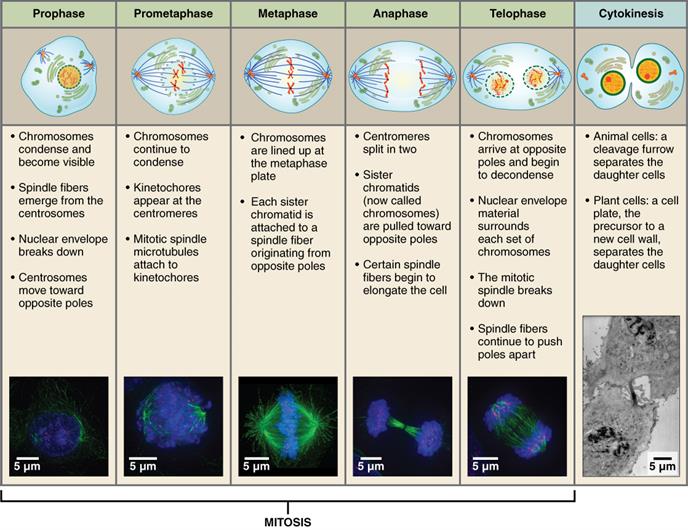
Mitotic cell division
Process of Mitosis:
The M phase begins with the nuclear divisions and ends with divisions of cytoplasm.
Mitosis consists of two events. They are,
Mitosis consists of two events. They are,
- Karyokinesis
- Cytokinesis
Karyokinesis (nuclear division):
The process by which the parent nucleus divided into two daughter nuclei is called Karyokinesis.
It consists of the following four stages.
a) Prophase
b) Metaphase
c) Anaphase
d) Telophase
b) Metaphase
c) Anaphase
d) Telophase
a. Prophase:
The term 'pro' means 'first'. It is the first and longest phase of mitosis.During this stage,
- The chromosomes are start to condense.
- Chromosomes become short and thick and become visible inside the nucleus.
- Centrosome divides and results in the formation of two daughter centrioles.
- Centrioles starts to migrate towards opposite poles.
- Each centriole is surrounded by the radiating rays called aster rays.
- Spindle fibres appear between the two centrioles.
- End of the prophase, the nucleolus and nuclear membrane disappear.
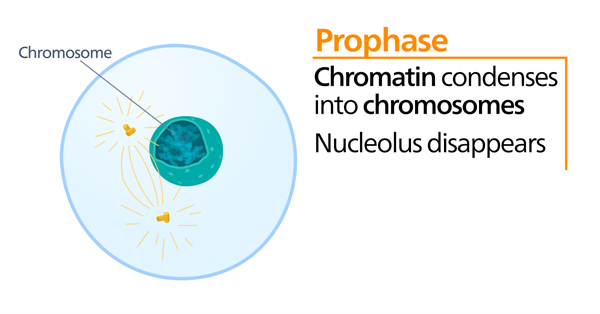
Prophase
Note : Aster
The term aster refers to a star.
The aster rays are made up of smaller and larger spindle fibres.
The aster rays are made up of smaller and larger spindle fibres.
Spindle fibres are structures that are formed from microtubules.
Microtubules are made up of tubulin.
b. Metaphase:
- The term 'meta' means 'after'. It is the second phase of mitotic division.
- Spindle fibres helps to align the duplicated chromosomes at the centre.
- All of the chromosomes become aligned at the equatorial plane and form the metaphase plate.
- The plane of alignment of the chromosomes at metaphase is referred to as the metaphase plate.
- Each chromosome gets attached to a spindle fibre by its centromere, known as the chromosomal fibre.
- The metaphase chromosome made up of two sister chromatids, which are held together by the centromere.
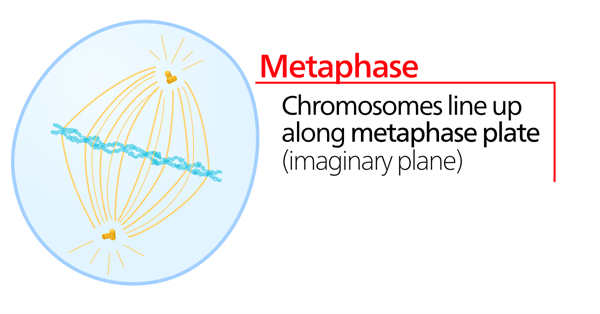
Metaphase
c. Anaphase:
The term 'ana' refers to 'up' or 'back'.
During this phase
- Centromeres split, and sister chromatids separate from each chromosome.
- Chromatids move towards the two opposite poles.
- The contraction of spindle fibres accomplishes the migration of the daughter chromosomes.
- It is the shortest stage of mitosis.
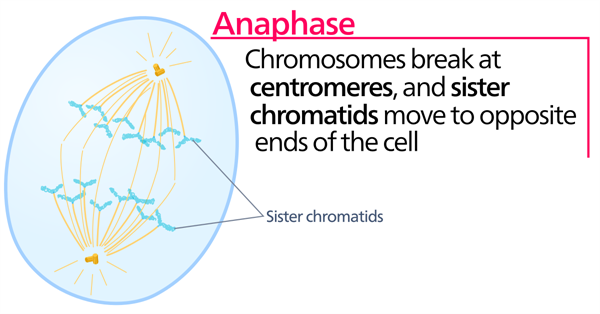
Anaphase
d. Telophase:
The term 'tele' refers to 'end'. During this phase, daughter cells return to the condition of interphase.
- Chromatids or daughter chromosomes lengthens.
- Chromosomes decondensed to form chromatin fibres, and they becomes thinner and turns into a network of chromatin threads.
- Spindle fibre breakdown and then disappear.
- Daughter chromosomes reach the pole.
- Nucleolus and nuclear membrane reassembles and reappear in each daughter nucleus.
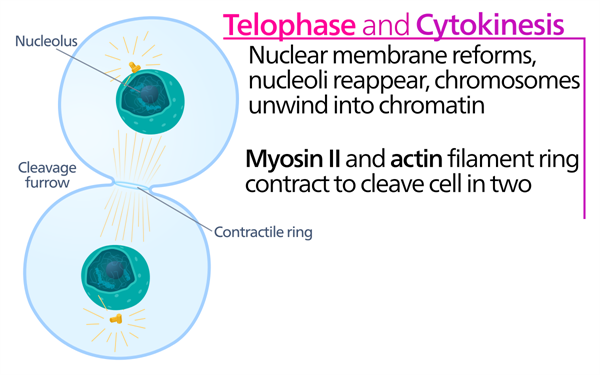
Telophase
Reference:
https://upload.wikimedia.org/wikipedia/commons/1/13/Prophase.svg
https://commons.wikimedia.org/wiki/File:Metaphase.svg
https://commons.wikimedia.org/wiki/File:Anaphase.svg
https://commons.wikimedia.org/wiki/File:Telophase.svg
https://commons.wikimedia.org/wiki/File:0331_Stages_of_Mitosis_and_Cytokinesis.jpg
